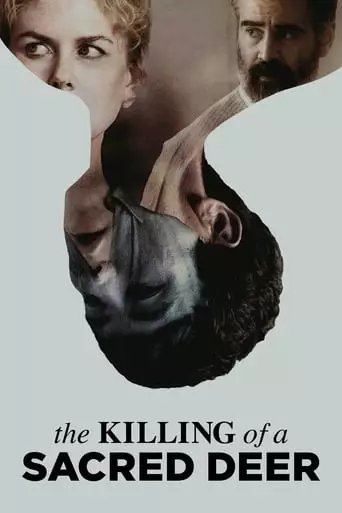
The Killing of a Sacred Deer (2017) Watch Online Free
Dr. Steven Murphy is a renowned cardiovascular surgeon who presides over a spotless household with his wife and two children. Lurking at the margins of his idyllic suburban existence is Martin, a fatherless teen who insinuates himself into the doctor’s life in gradually unsettling ways.
The Killing of a Sacred Deer (2017), directed by Yorgos Lanthimos, is a psychological thriller that blends horror, drama, and elements of Greek mythology. The film follows Steven Murphy (Colin Farrell), a renowned heart surgeon, who develops an unusual relationship with a teenage boy named Martin (Barry Keoghan). Martin’s father died under Steven’s care, and the boy harbors a deep, unsettling grudge. Over time, Martin insinuates himself into Steven’s life, and as the story unfolds, it becomes clear that his actions are tied to a supernatural and moral dilemma.
The plot takes a darker turn when Martin reveals that Steven’s family is cursed. In a chilling twist, he demands that Steven choose one of his family members—his wife Anna (Nicole Kidman), his son Bob (Sunny Suljic), or his daughter Kim (Raffey Cassidy)—to die in order to lift the curse. The family members gradually fall ill, and Steven is forced to make an impossible choice. The film explores themes of guilt, retribution, and the consequences of past actions, all while maintaining an eerie atmosphere that keeps the audience on edge.
At the heart of “The Killing of a Sacred Deer” is the theme of guilt and the consequences of past actions. Steven’s relationship with Martin stems from a tragic event in the past—the death of Martin’s father during a surgery performed by Steven. The movie emphasizes the idea that one cannot escape the moral repercussions of their actions, no matter how far they try to distance themselves from them. The curse that Martin places on Steven’s family serves as a metaphor for the inescapable nature of guilt and the need for atonement.
The film also explores the concept of revenge. Martin’s actions are driven by a need for retribution for the death of his father. The film portrays revenge as a cycle that is difficult to break, and it suggests that seeking vengeance can lead to destructive consequences for both the victim and the perpetrator. The moral complexity of Martin’s character, who may seem like a victim, makes the audience question whether revenge is ever truly justified.
One of the most prominent themes is the exploration of morality. The film challenges viewers to question the ethical decisions that Steven must make. Is it acceptable to sacrifice one life to save others? The dilemma Steven faces forces him to confront the nature of sacrifice and the moral implications of choosing one life over another. The film suggests that morality is not black and white, and that decisions made in extreme circumstances often come with a heavy emotional cost.
The film’s characters are emotionally distant and isolated from one another. Steven, despite his family’s wealth and apparent success, is detached from his wife and children. This emotional coldness creates an atmosphere of tension and unease throughout the film. The characters’ inability to connect emotionally with each other adds to the film’s unsettling tone, making the audience feel the isolation of the characters as they face the impossible situation brought on by Martin.
The idea of fate versus free will is also a central theme in the film. Steven’s struggle to change the course of events and his inability to escape the consequences of his actions reflect the tension between fate and free will. The curse that Martin imposes on Steven’s family seems like an inescapable fate, yet Steven’s attempts to alter the outcome suggest that free will and personal choice still play a role in determining the final resolution.
After watching “The Killing of a Sacred Deer,” you are likely to feel disturbed and unsettled. The film’s slow pace and intense psychological tension leave a lasting impression, and the moral dilemmas it presents may make you question your own ethical beliefs. You may feel a sense of unease as the film leaves many questions unanswered, forcing you to reflect on its themes long after it ends.
The film’s atmosphere is haunting, and the lack of resolution in the characters’ emotional arcs may leave you feeling dissatisfied in a way that is intended to provoke thought. You might also feel conflicted, as the film does not provide easy answers to the complex questions it raises about guilt, revenge, and morality. Ultimately, “The Killing of a Sacred Deer” is a thought-provoking experience that will leave you questioning the nature of justice and the consequences of one’s actions.
In conclusion, Yorgos Lanthimos’ “The Killing of a Sacred Deer” is a chilling and thought-provoking film that explores deep philosophical and moral themes. Its unpredictable plot, strong performances, and unique cinematic style make it a must-watch for fans of psychological thrillers. While it may leave you feeling disturbed, it is precisely this emotional discomfort that makes the film so impactful.
